Dave’s Faves: The 4 Biggest Tech Trends at CES This Year
“So what’d you see at CES this year?”
If I had a nickel for every time I’ve heard that question, well, I’d have about 97 nickels.
You can’t describe CES in a five-minute video or a 1,300-word article. Heck, even if you’re here in Las Vegas for all four days, you can’t see it all. It’s the biggest trade show in the Western Hemisphere: 3,000 booths. All electronics companies showing off their stuff.
The important lesson of CES: The stuff they’re showing isn’t necessarily coming soon to a store near you. A lot of it is experimental — prototypes, concepts, products, and trends that will never succeed, some of them more desperate than others (*cough* 3D television *cough*).
But if you had to boil down the most important trends, though, you might come up with these four.
No. 1: HDR television
The TV industry loved it when we all tossed out our old TV sets to buy new HDTV models. But now that we’re done with that transition, the industry has been wondering: How can they make us toss out our old sets again like that?
They keep trying gimmicks. 3D TV. 4K TV. Curved TV. None of it amounts to much.
This year, the buzzword was high-dynamic range (HDR) TV, which some companies will call Ultra HD Premium. These sets were running dazzling demo loops in the LG, Samsung, and other booths. (Sadly, whatever screen you’re looking at right now can’t convey the amazingly deep blacks and the expanded range of color — because it’s not HDR. You really had to be there.)
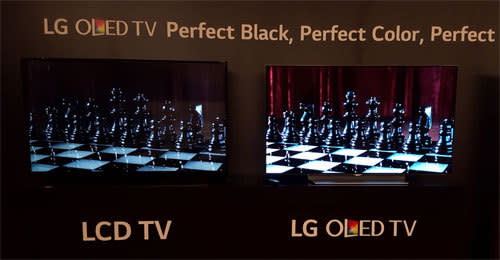
Turns out today’s TVs can display only a fraction of the range of colors and brightnesses that our eyes can see. HDR screens can come much closer.
And you can see that improvement immediately. I mean, there were gasps in the demos. Whites are that much brighter, blacks that much blacker, colors that much more varied.
Of course, getting HDR means not just a new set but also getting new stuff to watch on it. Netflix, Amazon, and other companies have indicated that they’ll start producing HDR shows, but it will take some time before the rest of the TV, movie, cable, satellite, and Internet worlds get on board.
No. 2: Virtual-reality goggles
CES attendees were agog over the goggles from Sony, Samsung, HTC, Oculus, and others. Yes, it’s virtual reality (VR), where you can turn your head inside your video game and “look around” the scene.
Most of those goggles are coming out later this year. There’s the Oculus Rift, which will cost $600 ($1,000-or-so PC you’ll need to run the games on not included). There’s Sony’s PlayStation VR (no price yet), which plugs into a PlayStation console (no PC needed). There’s Google Cardboard ($25) and Samsung Gear VR (available now, $100), which are basically holders for your phone (and aren’t nearly as sophisticated or amazing).

You hear people gushing about how VR will completely transform moviemaking and storytelling and entertainment; I say that’s going too far. These things are very, very cool in video games.
But movies? No. A movie is a story told from a single point of view, and everyone in the audience experiences the same story. If people are looking around behind them throughout the movie — well, it’s hard to tell the same story to everyone.
But games? Yes.
No. 3: Internet of Things
Man, how I hate that stupid term. It’s not even accurate: The things do not create an Internet; they don’t do email or watch Netflix.
All IoT means is networkability (and smartphone apps) for household gadgets like dishwashers, refrigerators, lights, door locks, thermostats, and so on. So far, there’s a lot more hype in this category than sales; the masses just aren’t buying. Probably because there’s no particular need for most things to be networkable.
But the industry barged ahead anyway this year. Samsung showed a refrigerator with cameras inside, so that you can check to see what needs refilling when you’re at the grocery store.
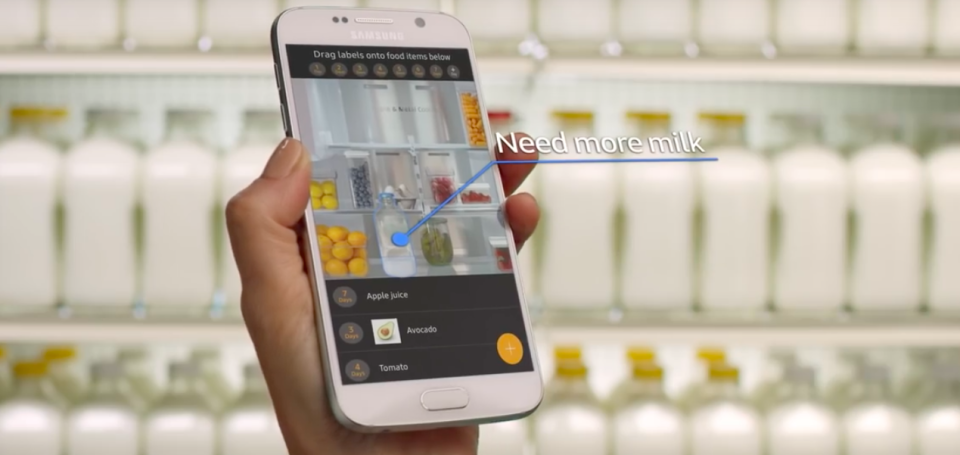
There were smart showers, smart bikes, smart clothes, and smart sports equipment. None of it will sell very well.
No. 4: Everything else
CES a great show for spotting crazy high-tech experiments, in addition to the big trends. Give enough engineers enough money and room, and they’ll come up with some mind-blowers. Some of my favorites (most of which are concepts, not actual products yet):
Autonomous vehicles: Self-driving cars are coming, and soon. As I recently discovered firsthand, lots of cars for sale today already do lots of driving by themselves. Toyota, Volkswagen, General Motors, Fiat Chrysler, and Ford were all at CES, demonstrating how close they’re getting to fully autonomous vehicles.
Can you imagine? It will be the end not just of accidents but also of driver’s ed, driver’s licenses, and speeding tickets.
Similarly smart software is also coming to drones; the 2016 batch on display at CES can follow you automatically as you ski or bike and, more important, can sense obstacles and avoid them automatically.
Wearables: No longer will people wear sensing technologies only on their wrists. At CES, you could see the Digitsole, a shoe that measures your footsteps, tracks your motion, measures shock absorption, heats your feet, and charges wirelessly. Under Armour unveiled sneakers that work similarly — they even let you know when it’s time to replace them.
Samsung’s massive booth — the largest at CES — included a corner where a concept wellness belt was on display — bearing the unfortunate name Welt. Its buckle detects increasing pressure from your bloating gut and informs your phone of your precise weight gain. Fortunately, the belt also tracks your steps like a Fitbit, so you’ll get some encouragement in burning off the fat.
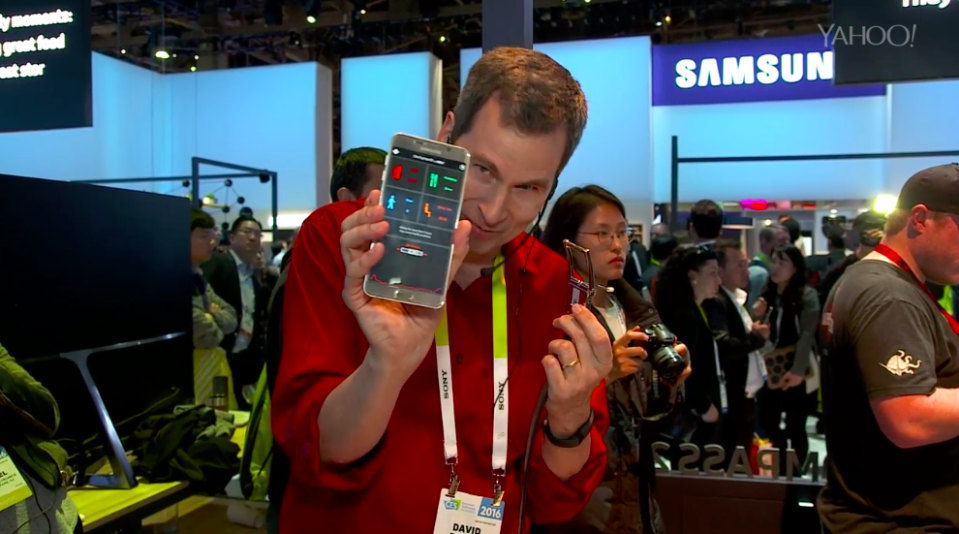
Samsung Modular TV: You can see this one in my video above. Samsung, as a concept for the future, has created one-foot tiles of TV screen. You can arrange them side-by-side, creating as big a TV as you want; most of the time, no seam lines are visible. (“Less seams better,” quipped the booth rep. He swears he made that up on the spot.)

As you get older and wiser and richer in life, you could buy more tiles and make your TV bigger.
Samsung showed a massive 170-inch TV that was, in fact, made up of these tiles. It also showed a TV whose halves split apart and rotate, forming a rectangle either with 16:9 proportions (to fit HDTV broadcast) or 1.85:1 (to fit movies). No letterbox bars, ever again. Mind-blowing.
Sony short-throw projectors: No room in your apartment (or no spousal permission) to hang a huge projector from your ceiling? Then just put Sony’s projector bar on the floor, right up against the wall. Incredibly, it projects a huge 4K video image straight up the wall. (A tiny tabletop version is available too — and it doubles as a speaker.)

Panasonic Interactive Mirror: Look at yourself in the mirror, choose a makeup look like “Clubbing” or “Hot date,” and watch as the mirror displays your real-time image with that makeup on your face. It’s a crazy-clever combination of optical and video technologies. Try different looks without ever actually putting makeup on; when you find one you like, tap a button for step-by-step instructions on how to make it happen. (Panasonic intends to sell this mirror to department-store makeup counters, for example.)
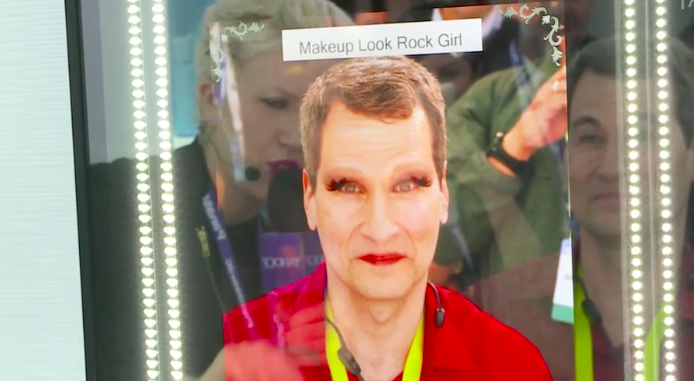
Chevy Bolt: An electric mini-SUV with 200-mile range and $30,000 price tag (after rebates)? This could be the one: the first electric car with big sales. It’s loaded with high-tech features like self-parking and self-steering within a lane, plus a rear-view “mirror” that’s actually a video feed. Coming later this year.
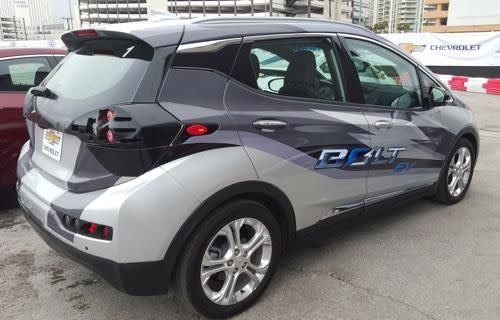
Even this Dave’s Faves roundup, of course, doesn’t convey the full, exhausting spectacle of CES. Fortunately, Yahoo Tech’s pages are teeming with more coverage of new products — some of which actually might see the light of day.
David Pogue is the founder of Yahoo Tech; here’s how to get his columns by email. On the Web, he’s davidpogue.com. On Twitter, he’s @pogue. On email, he’s poguester@yahoo.com. He welcomes nontoxic comments below.
More from CES 2016:
4 Big Trends at CES 2016: Cars, Wearables, Laptops, and Accessories for Everything
LG’s See-Through, Rollable OLED Screens: Here, but Not Cheap
HTC Debuts Improved Vive Pre VR Headset With Front-facing Camera
3D Printers Get Faster, Cheaper, Smarter: Can Now ‘Print’ Food, Bones, Even Funeral Urns
Samsung Updates the Smart Fridge: It Even Keeps Your Beer Cold!


